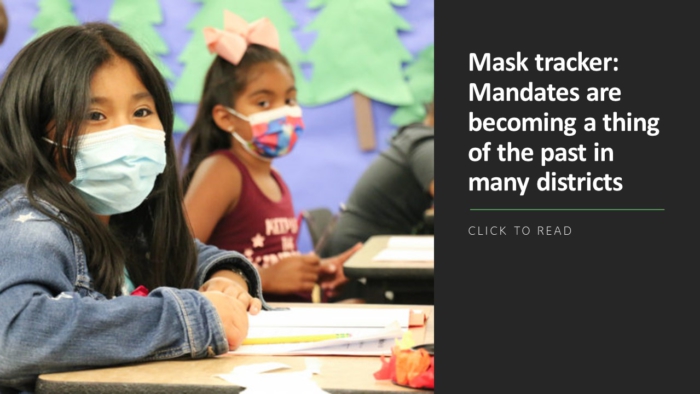Sometimes scientific experiments are intentional and sometimes they’re not. In “natural experiments,” as they’re sometimes called, an exigency or emergency forces an experimental condition that can then be compared to a control or standard condition.

As traumatic and tragic as it has been, the COVID-19 pandemic has created the conditions for robust learning by producing many natural experiments in education perhaps more than anywhere else.
During the pandemic, edtech platforms have seen their number of users explode, along with the data available to both researchers and teachers. This presents us with the opportunity to learn from this data and iteratively improve learning platforms. We’ve already learned a lot from our own math platform, ASSISTments, which the Institute of Educational Sciences recently highlighted as a Tier 1 distance learning tool and is both a research and learning platform.
Here are three central insights we think drive learning in distance learning scenarios.
-
Give fast, focused feedback
The first takeaway is simple but it’s hard to overstate its importance: give students constructive feedback as immediately as possible. Research has shown that immediate constructive feedback improves student learning. Immediate feedback allows learners to engage with content deeply. In a distance learning scenario, where disconnection and disengagement are the biggest barriers to learning, feedback becomes that much more important.
Why is feedback so important? In a word, direction. When students don’t get feedback — or get untimely or unconstructive feedback — they can easily feel like they’re in a vacuum where they’re just floating in space without direction, nothing telling them if they’re on track or moving forward.
To make progress you need direction: something that tells you where you’re going. When you’re learning something new, a constant stream of information — whether reaffirming or redirecting — helps you reach your goals.
Obviously, it would be ideal if teachers could be at each and every student’s shoulder to provide this direction and affirmation — but that’s impossible, even under the best of conditions, and certainly not in a distance learning scenario. But learning platforms can go a long way toward facilitating useful feedback.

For example, ASSISTments gives teachers a number of different options for placing strategic supports for student as they work independently solving problems. These can range from simple indications of whether a student got an answer correct, to hints on a new strategy to try, to embedded videos where students who are struggling get a quick refresher. Others tools, like the science and math simulations platform PhET, use interactive feedback so that students can experiment with, for example, chemical equations.
-
Use data reflectively
Teachers can also use data from platforms to learn in real-time what common problems students are experiencing. Embedded feedback can then be targeted to those problems, freeing up teachers to individualize instruction toward more specialized learning goals. This can help educators create a culture of reflection in their classrooms, where both students and teachers contemplate individualized learning goals and the means of achieving those goals.
This level of reflection is especially important in a distance learning environment because it’s easier for students to get distracted when they’re at home in front of screens all day long. Online environments can be enabling, but they can also cause students — and even teachers — to get sidetracked and deprioritize big-picture learning goals like critical thinking. Reminders to use offline tools like pencil and paper can help.
More from DA
Data can also help with focus. Automated scoring and identification of trouble areas for both individual students and the class as a whole provides teachers with vital information — and the time — to adjust and individualize learning. Some platforms like Newsela have added features to make classrooms more personalized and use natural language processing to make reading passages more targeted. Teacher reports can give specialized information such as common wrong answers given by certain students.
This keeps both students engaged and on the same page on expectations and the need for intervention. It creates an environment of continuous feedback and adjustment. And it drives home to students that mistakes are not evidence of failure but a progressive part of the learning process.
-
Create autonomous learners
The reflective use of data can also help students to think metacognitively about their own learning. Teachers have the greatest success when they involve students, giving them choices in setting, tracking, and adjusting learning goals. This gives students a sense of buy-in, autonomy, and intrinsic motivation that has been shown to drive learning more strongly than extrinsic motivations like grades. Again, in a distance learning environment where teachers must rely to a greater degree on student’s self-motivation, building autonomy is crucial.
The flexibility of online learning platforms can be a useful tool here. Their architecture can allow for greater student choice. Teachers, for example, can create assignments that differ by theme, difficulty level, due date, or feedback medium. Research on the ASSISTments platform showed that simply giving students choice could lead to improved performance — helping students, within certain parameters, invest in planning their learning. Other research, for example into language learning on the Schoology platform, which allows for individualized students pacing, has shown similar benefits.
Along with individualized, data-informed conversations with students, this kind of choice architecture can help students to think about and understand their own learning process, instead of focusing only on grades or test scores. They grow more focused on mastering the content rather than numerical metrics of success. This not only makes learning less stressful, more fun, and more absorbing; it also creates more successful learners.
Producing citizens invested in their own learning and understanding it as a lifelong endeavor is one of the highest goals of education. The successes of learning platforms show that deeper learning goals like this don’t have to be sacrificed just because students are learning from a distance.
Neil T. Heffernan is a professor of computer science at Worcester Polytechnic Institute, where he runs the ASSISTments ed-tech platform, and directs the Learning Science and Technologies Graduate Program.
Co-Founder & Executive Director of ASSITments Cristina Heffernan began her teaching career as a Peace Corps volunteer in Gabon, Africa. Since then she has felt at home working with and for educators with a special passion for middle school math. In 2003, Cristina was the go-to advisor for the work her husband Neil was starting at WPI – a platform to assist and assess students that would become ASSISTments. Soon she became a full partner in the project. They have been innovating and developing ASSISTments ever since.



